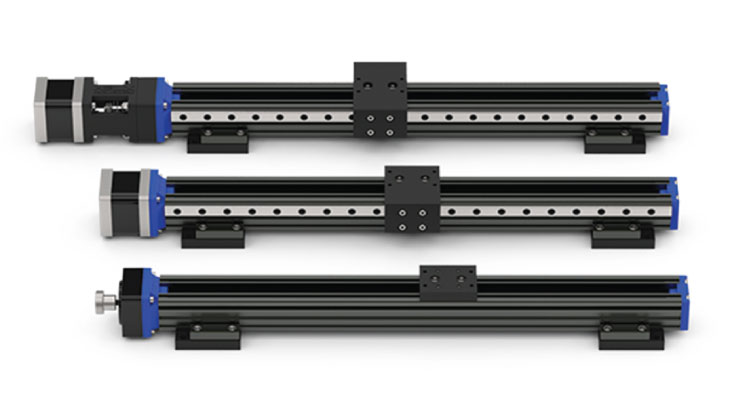FAQ Friday: The Top 11 Linear Actuator Questions Answered Here

Linear actuators have a variety of applications depending on the industry. Helix Linear's actuators can be used for any application requiring linear motion. Our linear slides, stepper motor actuators and Profile Rail Linear Actuators are pre-engineered, assembled, tested, and ready to use, making it the best economic and time-sensitive approach to low-cost automation. While we're sure, you're thinking, "That's great!" And it is. We're sure there are many more questions to answer, so keep scrolling below to find your answers.
1. Can I run the linear actuator into a hard stop?
This is not recommended on the more acceptable pitch resolutions due to the high forces generated, which may cause lock-up. It is possible, however, under reduced power input.
2. Will I need to re-lubricate the lead screw or shaft on the linear actuator?
The factory lubricated linear actuators for the product's life and did not need re-lubrication under normal operating circumstances.
3. What can I do to extend the life of the actuator?
Reducing the load, avoiding side loading, PTFE coating the screw, and proper mounting will help extend the life.
4. What could be the problem if an actuator with a brake is not holding the load?
Verify that the holding force of the actuator is not being exceeded. Check to see if any moment loading is being applied to the brake. Moment load prevents the wrap spring from thoroughly engaging, and the load will coast. Ensure the power to the unit is being fully cut.
5. What is the difference between static load and dynamic load?
Dynamic, working, or lifting load is the force applied to the actuator while in motion. Static load also called holding the load, is the force applied to the actuator when not in motion.
6. Can linear actuators have limit switches?
Linear actuators can be supplied with limit switches. The type of limit switches available varies with each product range.
7. Can two or more Helix Linear actuators be synchronized?
Synchronization of standard linear actuators is not recommended without using a connecting shaft. Minor motor differences in motor speed may cause the actuators to get out of synchronization. Clutch models allow alignment when the actuator is extended or retracted.
8. What's duty cycle, and how is it calculated?
The duty cycle is measured as the total on-times—the entire time duty cycle is generally calculated as a percentage of the period's whole time. Helix recommends a duty cycle of 25% at the rated load. Max total on time should not exceed 5 minutes.
9. Can I adjust the speed of a Helix Linear actuator in the field?
No, load vs. speed graphs are provided in the actuator catalogs. Should you need to vary the speed of the actuator, the proper electrical drive should be selected.
10. In what direction can load be applied to Helix Linear actuators?
Helix linear actuators can be used in either tension, compression, or a combination of the two. Side-loading should use any of our permissible in specific applications.
11. How Often Should I Lubricate my miniature linear rails? When should I lubricate my bearing?
The frequency of lubrication is highly dependent on the application load, speed, and environmental conditions. It is impossible to over-lubricate the bearings, as excess lubricant will merely exit the bearing under the seals.


